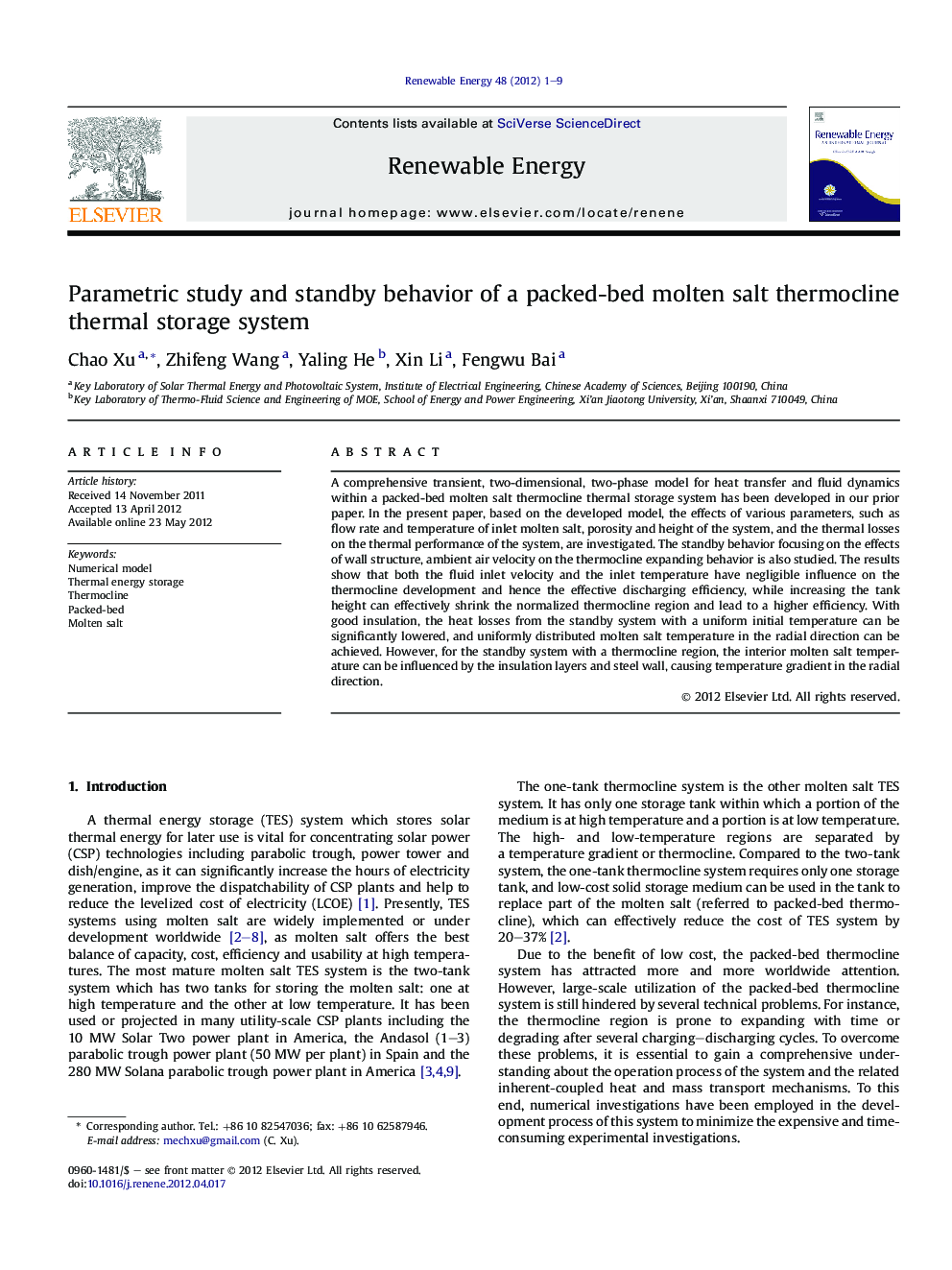| Article ID | Journal | Published Year | Pages | File Type |
|---|---|---|---|---|
| 300849 | Renewable Energy | 2012 | 9 Pages |
A comprehensive transient, two-dimensional, two-phase model for heat transfer and fluid dynamics within a packed-bed molten salt thermocline thermal storage system has been developed in our prior paper. In the present paper, based on the developed model, the effects of various parameters, such as flow rate and temperature of inlet molten salt, porosity and height of the system, and the thermal losses on the thermal performance of the system, are investigated. The standby behavior focusing on the effects of wall structure, ambient air velocity on the thermocline expanding behavior is also studied. The results show that both the fluid inlet velocity and the inlet temperature have negligible influence on the thermocline development and hence the effective discharging efficiency, while increasing the tank height can effectively shrink the normalized thermocline region and lead to a higher efficiency. With good insulation, the heat losses from the standby system with a uniform initial temperature can be significantly lowered, and uniformly distributed molten salt temperature in the radial direction can be achieved. However, for the standby system with a thermocline region, the interior molten salt temperature can be influenced by the insulation layers and steel wall, causing temperature gradient in the radial direction.
► We study the effects of various parameters for the packed-bed molten salt thermocline system. ► We study the effects of wall structure and air velocity on the thermocline expanding behavior. ► The interior fluid temperature can be influenced by the insulation layers.
